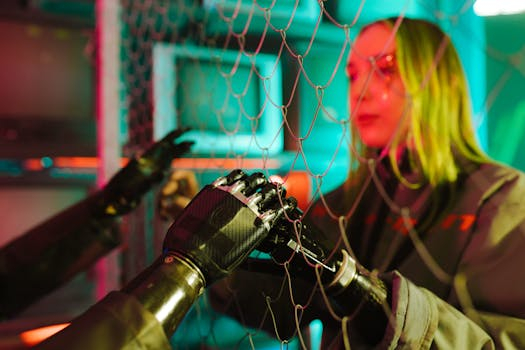Neural Network Knitting: AI-Generated Textile Innovations
Artificial intelligence has made incredible strides in various industries, and the world of fashion and textiles is no exception. In particular, the use of neural networks in knitting has revolutionized the way we think about textile production. With the ability to generate complex and innovative designs at incredible speeds and with unparalleled precision, neural network knitting is paving the way for a new era of AI-generated textile innovations.
The Rise of Neural Network Knitting
Knitting is an ancient craft, dating back thousands of years. However, the process of manually knitting garments is time-consuming and laborious, often limiting the potential for intricate and unique designs. With advances in technology, computer-aided knitting machines have been introduced to streamline the process. But even with these machines, there were limitations in the complexity of designs that could be produced.
This is where neural network knitting comes in. By using artificial intelligence and machine learning algorithms, these knitting machines are now able to create complex and original designs in a fraction of the time it would take a human knitter. This means that designers can focus on the creative side of the process, while the AI handles the technical aspects of textile production.
The Process of Neural Network Knitting
Neural network knitting works by analyzing a vast database of existing knitting patterns and using this information to generate new designs. This involves feeding the AI system with different variables such as type of garment, yarn weight, and stitch patterns. The more data that is provided, the more accurate and sophisticated the designs can become.
The AI then generates a unique pattern, taking into consideration the desired size, fit, and style. This algorithmic approach eliminates the need for manual pattern writing and testing, saving time and resources for designers and manufacturers. Additionally, since the designs are computer-generated, every stitch and color change is precisely executed, resulting in a flawless finished product.
The Impact of Neural Network Knitting
The possibilities of neural network knitting are endless. Not only does it allow for faster and more efficient textile production, but it also opens up a whole new world of design possibilities. The AI-generated designs can incorporate intricate and complex patterns that would be nearly impossible for humans to create by hand.
The technology also presents a more sustainable approach to fashion and textile production. With AI-generated designs, there is less material waste, as the patterns are tailored to fit garments precisely, minimizing leftover fabric. This reduces the environmental impact of the textile industry, which is known to be one of the most polluting industries in the world.
The Future of AI-Generated Textile Innovations
As with any emerging technology, there are still challenges and limitations that need to be addressed. Fine-tuning the AI algorithms to produce more accurate and complex designs is an ongoing process. Additionally, there are concerns about the potential impact on human employment in the textile industry. However, the benefits of neural network knitting far outweigh these challenges and are sure to have a significant impact on the future of fashion and textile production.
Moreover, the use of neural networks is not limited to knitting alone. Similar AI-generated textile innovations are already being explored in other areas, such as weaving and embroidery. This opens up even more possibilities for designers and manufacturers to push the boundaries of traditional textile production and create truly unique and innovative designs.
The Continuing Evolution of AI in Fashion and Textiles
Neural network knitting is just one example of how artificial intelligence is transforming the fashion and textile industry. As technology continues to advance and evolve, it’s exciting to imagine the endless possibilities that await us in the future. From eco-friendly production methods to intricate and personalized designs, AI is set to revolutionize the way we think about fashion and textiles.
In conclusion, neural network knitting is a game-changer in the world of textile production. With its ability to generate complex and innovative designs at incredible speeds and with unparalleled precision, it is sure to shape the future of fashion and textiles in ways we never thought possible.






